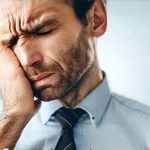Prostatitis, inflammation of the prostate gland, can be an incredibly debilitating condition affecting men of all ages. Symptoms range from painful urination and frequent urges to urinate, even at night, to lower back pain, discomfort in the groin, and sometimes sexual dysfunction. The search for triggers and exacerbating factors is often intense for those suffering, as identifying and avoiding them can significantly improve quality of life. One common question that arises – and understandably so – is whether bicycling, a popular form of exercise and transportation, could potentially worsen prostatitis symptoms.
The relationship between cycling and prostate health is complex and not fully understood. While many men cycle without issue, others report symptom exacerbation. This article will explore the potential mechanisms through which bicycle seats might impact individuals with prostatitis, examine existing research, and discuss strategies for minimizing discomfort while continuing to enjoy this activity. It’s important to emphasize that individual experiences vary greatly, and what affects one person may not affect another.
The Potential Link Between Bicycle Seats and Prostatitis
The concern stems primarily from the pressure exerted by bicycle seats on the perineum – the area between the scrotum and anus. This region houses the prostate gland and surrounding nerves and blood vessels. Prolonged or excessive pressure in this area could theoretically contribute to inflammation or irritation of the prostate, potentially worsening existing prostatitis symptoms. However, it’s vital to understand that correlation does not equal causation; simply experiencing worsened symptoms after cycling doesn’t automatically mean cycling is the cause.
Many factors beyond seat pressure can influence prostatitis symptoms, including stress, diet, hydration levels, and overall physical activity. Identifying these contributing factors alongside potential bicycle-related influences is crucial for effective management.
Cycling & Perineal Pressure: A Closer Look
The design of traditional bicycle seats often focuses on supporting the sit bones (ischial tuberosities), but this can inadvertently concentrate pressure onto the perineum, particularly when leaning forward or riding over uneven terrain. Different seat shapes and padding materials impact the amount and distribution of this pressure. Narrower saddles tend to increase perineal pressure more than wider ones, while thicker padding doesn’t always equate to better pressure relief—it may simply redistribute the pressure rather than reduce it.
Understanding Prostatitis Types & Their Susceptibility
Prostatitis isn’t a single condition; it encompasses several distinct types. Acute bacterial prostatitis is relatively rare and typically requires antibiotic treatment. Chronic bacterial prostatitis involves recurring infections, while chronic prostatitis/chronic pelvic pain syndrome (CP/CPPS) – the most common type – has a less understood etiology and often doesn’t involve identifiable bacteria. The impact of cycling might differ depending on the specific type of prostatitis. For example, individuals with CP/CPPS may be more sensitive to pressure in the perineal region due to heightened nerve sensitivity or pelvic floor dysfunction.
Seat Design & Pressure Distribution Strategies
Numerous bicycle seat designs aim to alleviate perineal pressure. Cut-out saddles remove material from the central portion of the seat, reducing contact and allowing space for the perineum. Nose-less saddles eliminate the front portion entirely, distributing weight more evenly across the sit bones. Furthermore, adjustable seat posts allow riders to fine-tune their position and reduce forward lean, minimizing pressure on the perineum. Investing in a professional bike fit can also ensure optimal positioning and saddle height, further contributing to pressure relief.
The Role of Bike Fit & Riding Position
A proper bike fit is paramount for minimizing discomfort and potential aggravation of prostatitis symptoms. An ill-fitting bike forces riders to compensate with awkward postures that increase pressure on the perineum and strain other muscle groups. A skilled bike fitter will assess your body measurements, riding style, and flexibility to recommend adjustments to saddle height, handlebar position, and cleat placement (for clipless pedals). Optimizing these parameters can significantly improve comfort and reduce stress on sensitive areas. Similarly, maintaining a more upright riding posture generally reduces perineal pressure compared to an aggressive, aerodynamic position.
Ultimately, the connection between bicycling seats and prostatitis is complex and highly individual. While pressure on the perineum can potentially exacerbate symptoms in some individuals, it’s not necessarily a universal trigger. Understanding the different types of prostatitis, exploring alternative seat designs, prioritizing proper bike fit, and being mindful of riding position are all essential strategies for minimizing discomfort and continuing to enjoy this beneficial activity. It is always best to consult with a healthcare professional for personalized advice tailored to your specific condition.





















